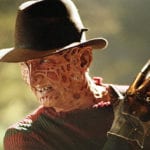 Music
Music  Music
Music  History
History 10 Less Than Jolly Events That Occurred on December 25
 Weird Stuff
Weird Stuff 10 Funny Ways That Researchers Overthink Christmas
 Politics
Politics 10 Political Scandals That Sent Crowds Into the Streets
 Weird Stuff
Weird Stuff Ten Bizarre Facts About The Doge Meme
 Our World
Our World 10 Ways Your Christmas Tree Is More Lit Than You Think
 Movies and TV
Movies and TV The 10 Coolest Stars to Set Sail on The Love Boat
 History
History 10 Things You Didn’t Know About the American National Anthem
 Technology
Technology Top 10 Everyday Tech Buzzwords That Hide a Darker Past
 Humans
Humans 10 Everyday Human Behaviors That Are Actually Survival Instincts
 Music
Music 10 Surprising Origin Stories of Your Favorite Holiday Songs
 History
History 10 Less Than Jolly Events That Occurred on December 25
 Weird Stuff
Weird Stuff 10 Funny Ways That Researchers Overthink Christmas
Who's Behind Listverse?

Jamie Frater
Head Editor
Jamie founded Listverse due to an insatiable desire to share fascinating, obscure, and bizarre facts. He has been a guest speaker on numerous national radio and television stations and is a five time published author.
More About Us Politics
Politics 10 Political Scandals That Sent Crowds Into the Streets
 Weird Stuff
Weird Stuff Ten Bizarre Facts About The Doge Meme
 Our World
Our World 10 Ways Your Christmas Tree Is More Lit Than You Think
 Movies and TV
Movies and TV The 10 Coolest Stars to Set Sail on The Love Boat
 History
History 10 Things You Didn’t Know About the American National Anthem
 Technology
Technology Top 10 Everyday Tech Buzzwords That Hide a Darker Past
 Humans
Humans 10 Everyday Human Behaviors That Are Actually Survival Instincts
10 Frightening Movies Based On True Stories
For the Last House on the Left’s infamous advertising campaign, audiences were supposedly instructed to keep from fainting by repeating to themselves “it’s only a movie, only a movie.” Very often, though, there was someone for whom the horrifying events being portrayed were not just a movie. Imagine what it would have been like for them if they saw some stranger’s film about their experience.
10 Changeling
Changeling is certainly not a conventional horror movie, but its basic premise is deeply unnerving. In 1928, single mother Christine Collins (played by Angelina Jolie) reported her nine-year-old son Walter missing. Determined to get a new home however he could, a 15-year-old runaway named Arthur J. Hutchins claimed to be her missing child. Eager for a success story, the police insisted that Hutchins was her son despite Collins’ protests. Not wanting to admit their mistake, the authorities accused Collins of simply attempting to abandon her son and began making the case that she was an unfit parent.
As disturbing as what happened to Christine Collins would be, it would likely have been overshadowed by the fate of the real-life Walter Collins if it were portrayed in depth in the film. It was highly suspected that he was one of as many as 20 victims of Gordon Stuart Northcott, the perpetrator of the infamous Wineville Chicken Murders. This aspect of the case was downplayed in the movie to concentrate on the injustices Christine Collins experienced.
9 I Spit On Your Grave
One of the most critically unpopular movies of its era, the premise of 1981’s I Spit on Your Grave is undoubtedly questionable. While visiting the Connecticut countryside, New York City writer Jennifer Hills is violated by a group of men. She avenges herself by killing them, usually after disarming them with feigned sexual interest. Such critics as Julie Bindel of The Guardian and John Bloom, however, claim the movie was not intended to be exploitative. They argue that Hills uses the misogyny of her attackers against them, and that the way the film is shot and performed shows that it was not intended to be sexually stimulating. Maybe this misguided intention would have been better understood if it had become famous under its original title Day of the Woman.
Writer/director Meir Zarchi was inspired to make this controversial film by an experience he had in Central Park in 1974. Accompanied by his eight-year-old daughter, he encountered a woman in her late teens who had been raped and beaten. For her protection, Zarchi took her to the nearest police station. There, Zarchi was shocked by how he felt the victim was being treated callously. When nobody took her to the hospital for her obviously grievous injuries, Zarchi decided to take her himself. He came to feel that the police could not be truly relied upon to protect victims of crimes of this nature. This is the reason in the film that the character Jennifer Hills gets personal, violent revenge against her attackers instead of trusting the legal system.
8 The Honeymoon Killers
Despite having a premise and degree of technical polish that makes it seem like just a 1970 B-movie, The Honeymoon Killers has some significant film pedigree. Martin Scorsese handled pre-production and directed one week of shooting(8) before he was replaced by Leonard Kastle, and it has been distributed on DVD and Blu-ray by the highly regarded company Criterion. Some(9) even speculate that it was influential to some degree to the career of John Waters regarding the creation and shaping of the “Divine” character from his early films.
The film is about a nurse named Martha Beck (Shirley Stoler) who starts a romantic correspondence with a fraudulent gigolo named Raymond Fernandez (Tony Lo Bianco) in 1947. Through escalating mutual manipulation, they fall into an arrangement where Fernando woos desperate and lonely women while Martha kills them. The scheme eventually involves the murder of Martha’s own family before the pair get apprehended by the police.
This is an extreme case of the truth being much worse than the already over-the-top horribleness of fiction. Police suspected that the real Beck and Fernandez killed seventeen people between the start of their racket in 1947 and their arrest in 1949. These would likely have been very grisly murders, as Beck was a woman with such a violent temper that she once strangled and drowned a two-year-old girl because Beck couldn’t get her to stop crying. Beck and Hernandez were executed in 1951.
7 The People Under The Stairs
Wes Craven’s 1991 hit horror fantasy seems so ridiculously far-fetched that it comes across more like a dark fairy tale than a plausible story. In the movie, the family of a teenager nicknamed Fool is facing eviction. Fool attempts to rob his landlords, but they turn out to be psychopaths who keep prisoners in the basement who they starve into cannibalism.
Admittedly, the truth was slightly exaggerated for the film this time. In the true story from 1978, it was a couple in Santa Monica, CA who abused their children and kept them imprisoned in the house. The children were found as a result of neighbors reporting to the police that they had seen people breaking into the house. As Wes Craven seemed to remember it, the perpetrators were allegedly black. This seemed to be the most relevant aspect to Craven, as it turned what seemed primarily a horrifying scenario into a parable about race relations.
6 The Blob
Both the 1958 and 1985 versions of this story of predatory protoplasm can trace their lineage to the same odd police report from an incident that occurred on Sept. 26, 1950. Two Philadelphia, PA area police officers witnessed the crashing of a meteor in a field. Approaching the impact site, they noted a bad odor before they encountered a purple mass of ooze about 2 meters (6 ft) in diameter emitting a strange glow. It seemed to be quivering in a way that suggested it was animate, but of course, it didn’t do anything that could be considered hostile.
If you thought it was far-fetched that people would be so reckless as to interact with alien ooze with just a stick in the movies, it’s worth noting that Officer John Collins reportedly stuck his bare hands into the mass. The ooze dissolved harmlessly on his hands and the rest of the gelatinous substance followed suit within an hour. Eight years later, it re-materialized in a minor masterpiece where it was hopelessly pitted against Steve McQueen.
5 Open Water
The indie darling of 2004, Open Water, abandoned a young couple of scuba divers 70 kilometers (43 mi) from land and surrounded them with sharks. As with the true story it was based on, no one noticed they were missing for days. Protagonists Daniel and Susan’s limited characterization in the film doesn’t touch on some of the more memorable aspects of the people they were clearly based on, and the film didn’t show certain aspects revealed during the investigation.
The real life couple that went missing on January 25, 1998 off the coast of Queensland, Australia in a popular diving spot called Fish City were named Eileen and Thomas Lonergan. They had worked as Peace Corps teachers in Fiji and had married right out of high school. Curiously, evidence emerged after the fact that the Thomas Lonergan was undergoing severe depression on the day they departed for their dive. The theory that the couple committed intentional suicide was considered discredited by the fact there were evident plans for their return home, such as their booked return flight, discovered after they went missing. Another notable series of discoveries were their undamaged articles of clothing and diving equipment found in later weeks sans any trace of the people themselves or evidence of violence. These included Thomas’s diving vest a week after the disappearance and their diving tanks. Thus, the mystery deepened so far that the truth will probably never surface.
4 Hard Candy
This tense independent film is probably most famous for convincing director Jason Reitman that Ellen Page was suitable for starring in Juno, launching her career. What it’s infamous for is the subject matter: A teenager named Hayley Stark lures a suspected child predator (Patrick Wilson) into a position where she can get righteous vengeance. This righteous vengeance consists, among other things, of drugging and castrating him—or does she?
Producer David Higgins took inspiration for this story from a news segment about young women in Tokyo using the promise of sex to lure business men into traps. Rather than the morally ambiguous but just nature of Hayley Stark’s mission, groups of young women would merely mug the men they had tricked. Unfortunately the “inspirational” news segment is not currently available—indeed, Higgins wasn’t even sure when he related this story where he heard about it—so details such as how this series of crimes came to light remain unknown.
3 Nightmare on Elm Street
Wes Craven returns to this list to make another film based on an event almost too far-fetched for a movie, let alone real life. Actually, it was three events over the course of 1981 that were reported by The Los Angeles Times, according to an interview with the writer/director.
As Craven explained, what had happened in each of the three stories were people seemingly killed by their nightmares. In the largest-scale incident, 18 unrelated people from Laos died in their sleep after expressing extreme fear that their dreams would kill them. The news story the filmmaker claimed was the most frightening to him was an incident in Oregon, in which the victim woke his parents with his screaming and died apparently before he awoke. Of particular note was the fact that an autopsy did not arrive at a conclusive cause of death. Thus was conceived the infamous modus operandi of undead child predator Freddy Kruger.
2 Dead Ringers
David Cronenberg’s 1988 masterpiece features one of Jeremy Irons’ most compelling performances as Beverly and Elliot Mantle, twin gynecologists. Among the more disturbing scenes include Beverly, his sanity clearly slipping, displaying frightening gynecological instruments that look like monster props, and another in which Beverly performs a physically and verbally abusive examination of a patient.
The real siblings they were modeled after were named Stewart and Cyril Marcus, who died together of barbiturate withdrawal in their New York City apartment in 1975. Almost all the themes of the movie—such as repeated references to the most famous conjoined twins Chang and Eng, because Beverly and Elliot believe they should be conjoined on a physical level—are not known to have been interests of the real twins.
1 The Girl Next Door
Even as edgy and graphic as author Jack Ketchum is, his 1989 book and 2007 movie fell significantly short of portraying the horrors of the true story. The event in question was the torturous death of Sylvia Likens in 1965. Likens, the teenage daughter of two carnival employees, and her younger sister Fanny were placed in the care of Gertrude Baniszewski at a charge of 20 dollars a month. This was one of many ways Jack Ketchum softened the story—in his versions, the parents had died and Sylvia and Jenny had almost no other options, but the truth was that her father essentially put them in the situation.
Already poor and in ill health, along with seven dependents of her own, Baniszweski seemed to snap under the increased stress and began abusing the Likens girls. It started with spanking and gradually increased in severity, reaching a point where Sylvia was forced to eat her own vomit at a dinner table as punishment for overeating at a church picnic. Baniszewski’s crimes were amazingly brazen at times—when being interviewed in her home by her neighbor Phyllis Vermillion, who was considering having her babysit for her, Baniszewski bragged about a black eye she gave Sylvia and then threw hot water at her charge.
Eventually, several of Baniszewski’s children began participating in the abuse. In fact, when Likens bitterly called her sisters “prostitutes” at school after weeks of this, two boyfriends of Baniszewski’s daughters beat her as well. Finally, Sylvia and Jenny told their older sister Diana Shoemaker what was happening to them, and she stopped by the home unexpectedly to investigate. Baniszewski told her that she’d thrown Sylvia out of the house and threatened to have Diana arrested. Afterwards, Baniszewski decided to cut Sylvia off from the rest of the world, and at the end, locked her in the basement, but not before she had used a needle to brand Sylvia’s stomach with the phrase “I’m a prostitute and proud of it.” Sylvia passed away from starvation and abuse on October 22, 1965 after three months of violence.
Dustin Koski hopes that his serial novel Please, God will never become a true story and neither will you.








